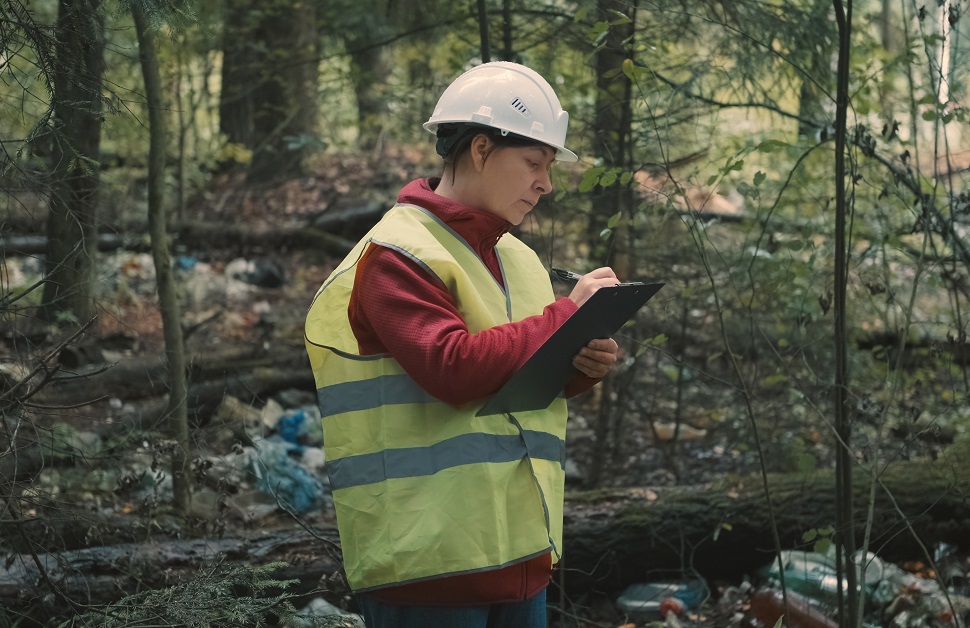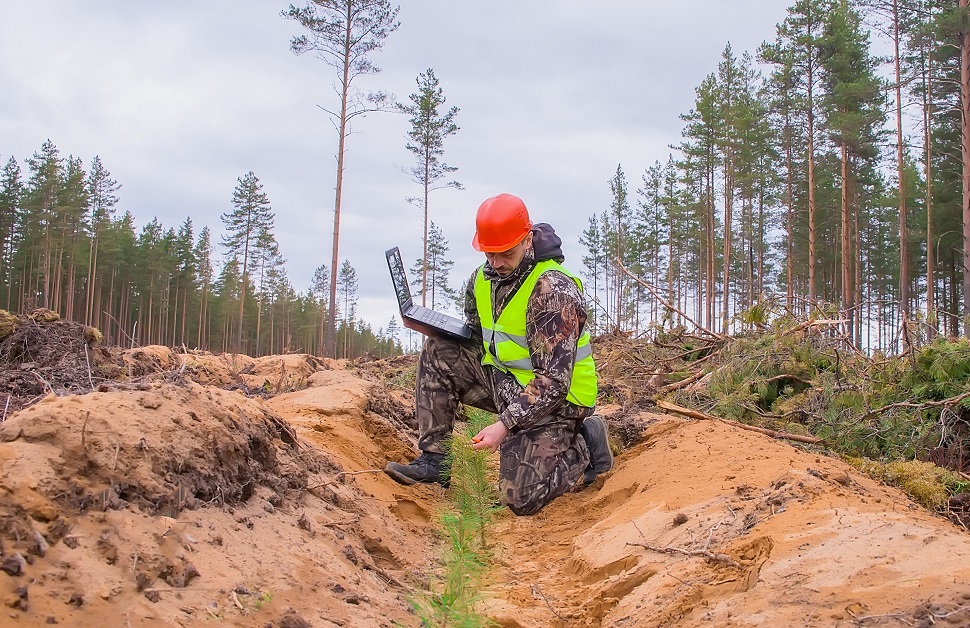
The Biodiversity Net Gain Metric
As of November 2021, biodiversity net gain (BNG) has become an essential part of the majority of development projects moving forward that will transform the way we think about planning projects, with a focus on preserving and enhancing the natural environment. But even with an ongoing two-year transition period in place, developers have had to adapt quickly to the requirement, as an uncertain number of local planning authorities within local councils already began to roll out BNG as if it was already universally enforced by law.
A part of the Environment Act 2021 – previously the Environment Bill prior to royal assent – the concept of mandatory biodiversity net gain centres around an intention to increase the biodiversity value on a site to a measurably better state by a minimum of 10%. For it to work successfully, an ecologist conducting a biodiversity net gain assessment will need to measure ecological value using a statutory biodiversity metric calculation that accurately assesses the current state of biodiversity on the development site. The recorded calculation can then be used to gauge how much the level of biodiversity needs to be improved upon to meet or exceed the 10% increase through the retention of existing ecological networks and new habitat creation.
In order for ecologists to create a biodiversity net gain plan / biodiversity net gain report that has effective measures to achieve the 10% increase, a predetermined biodiversity metric has to be utilised correctly. Over the course of this article, we use our insight to explain what the biodiversity metric is, why it is crucial during any BNG assessment, and how we approach using the statutory metric to measure biodiversity value and satisfy the BNG planning policy.

What is the Biodiversity Net Gain Metric?
The biodiversity net gain metric is a unit of measurement used to quantify the ecological value of development sites. Primarily determined by the value of a site area based on natural features that could act as irreplaceable habitats for local wildlife, the statutory biodiversity metric is a fundamental part of any biodiversity net gain assessment and plays a pivotal role in evaluating the value of the site.
Criteria used within a calculation made using the BNG metric include both land and intertidal areas, particularly factoring in hedgerows, rivers and streams inside the boundary lines of the plot of land. In terms of the professionals tasked with using the statutory metric, ecologists often need to utilise it to calculate biodiversity value as part of a biodiversity assessment. However, the biodiversity metric may also be used by other stakeholders in the planning process.
For instance, this may include developers during a biodiversity assessment, landowners on a biodiversity gain site register who need to offset biodiversity units as statutory biodiversity credits from one site to another, local communities that want to gauge the impact of planning projects on local biodiversity, and local planning authorities that need to confirm that the biodiversity values in front of them are correct before granting or denying planning applications.
How does the Biodiversity Metric Contribute to BNG?
Potential changes to biodiversity value on a site – both positive and negative – can be quantified through the use of the statutory biodiversity metric. Features of utilising the metric include analysing the biodiversity unit value of a specific plot of land, gauging likely impacts on biodiversity, identifying biodiversity gains and losses to biodiversity, and mapping out necessary on-site and off-site enhancements.
Not only does the BNG metric give an accurate representation of the current state of biodiversity on a site, but it is also used to predict the resulting condition of biodiversity once the development has been completed. To do this, an ecologist will speak to the developer in charge of the project and view all plans they have for the development to understand what biodiversity on the site will look like afterwards.
Through looking at both the pre-development measurement and the predicted post-development measurement, an ecologist can clearly view the difference between the two figures before developing methods of eliminating the deficit in the biodiversity gain plan and building upon it to increase net gains of biodiversity by at least 10%.
Biodiversity Metrics
Created with input from the Environment Agency, the Forestry Commission, Natural England / Natural Resources Wales and numerous local planning authorities, the biodiversity metric was developed by the Department for Environment, Food and Rural Affairs (DEFRA). Additionally, DEFRA also developed updated versions of the metric to suit different purposes, such as a simplified version and a calculation tool small sites can use on smaller developments.
Over time, the biodiversity net gain metric has been altered following natural trial and error during the implementation of the planning policy and suggestions from environmental organisations, responsible bodies and local authorities, as well as the insight taken from professional ecologists and developers following biodiversity net gain consultations.
Below, we have outlined the core updates to biodiversity metrics spanning from the first version up until the most recent:
Biodiversity Metric 1.0
Released in 2012, the first biodiversity metric was piloted before changes were made based on early tests of biodiversity net gain and suggested changes put forward by industry experts. Among the updated version of the first biodiversity metric were capabilities to cover a broader range of habitat types, more consideration in regards to ecological connectivity, and integration with a spreadsheet tool that supports the application of the metric.
Biodiversity Metric 2.0
By 2019, opportunities for feedback from a wide range of stakeholders presented numerous changes to biodiversity metric 1.0 that would make measuring biodiversity more effective. Along with the significant change that enabled both area and linear habitats to now be measured, biodiversity metric 2.0 also introduced measurements of intertidal habitats and the ability to look up canal data on river metrics.
It also eliminated several faults in the first BNG metric such as data outside of the chosen plot of land factoring into the measurement, incorrect options from dropdown tabs, missing options in hedgerow length lookup, retained off-site habitats being left out of the measurement, and rows missing in the habitat enhancement tabs.
Biodiversity Metric 3.0 / Biodiversity Metric 3.1
Following further tests and government consultations to gauge local importance, DEFRA released biodiversity metric 3.0 as part of a government response in 2021. Key changes from DEFRA biodiversity net gain metric 2.0 to 3.0 include adding a contextual understanding of created or enhancing habitats in advance or over phased developments, changing the target of improved biodiversity from 32+ years to 30+ years, removing the accelerated succession and connectivity tools, updating the physical appearance, and various changes to flora and fauna data.
2022 then saw the unveiling of biodiversity metric 3.1, with key changes including improved accessibility, clearer definitions of on-site and off-site enhancements, more suitable labelling of terms, a better explanation of the notes column, updated information on applying the BNG metric correctly, and area habitat alterations to agricultural, grassland, habitat mosaics, heathland, intertidal habitats, quarries and mines, scrub habitats, urban roofs, urban trees, wetland habitats, and woodland and forest, as well as linear habitats such as hedgerows and lines of trees, and rivers and streams.
Biodiversity Metric 4.0
Even though many alterations were made between biodiversity metric 3.0 and 3.1, a future update that will include an effective approach for incorporating marine net gain for English waters is expected. Instead, biodiversity metric 4.0 arrived in March 2023, with Natural England labelling it as a ‘substantial update to previous versions‘ while also stating that the ‘majority of changes are focused on providing an enhanced user experience‘.
Aside from enhancing the user experience, the transition from 3.1 to 4.0 saw name changes to numerous irreplaceable habitat types, the introduction of new habitat categories such as rural trees, tall forbs and willow scrubs, alterations to condition sheets, tweaks to the metric calculation tool, and the previously singular habitat categories of vacant/derelict land and bare ground being split into two separate habitat categories of vacant or derelict land and bare ground.

Using the Statutory Biodiversity Metric
When an ecologist needs to measure the biodiversity value of a development site as part of a BNG assessment, the same factors will be used. Components factored in to measure biodiversity value consist of the types of habitat parcels on the site, the condition of each habitat parcel, the size of each habitat parcel in kilometres, hectares or metres squared, and the locations of each habitat parcel.
All of the data from the biodiversity net gain assessment can then be submitted to the government website’s biodiversity metric 4.0 calculation tool to determine an accurate score based on ecological features such as protected species of animals and plants present on the site.
Measuring Net Gain Based on the Biodiversity Metric
If you are in the process of staging a land development, it is highly likely that you will be required to achieve BNG, deliver net gain and enhance biodiversity value on the site by at least 10% post-development compared to pre-development. By following mandatory BNG in the first place within the transition period between November 2021 and November 2023 or after it became mandatory in February 2024, you’ve given yourself assurances over meeting the legal requirements, trusting accurate data sources and either achieving biodiversity net gain on-site by growing the number of biodiversity units or buying statutory credits to account for habitat loss and demonstrate creation and enhancement off-site.
In preparation for the planning application stage, a technical consultation from an ecologist can be used to avoid adverse impacts and secure planning permission. A team such as ours is proficient in examining the nature conservation of a minor or major development site, analysing further detail in regard to modified grassland and other land concerns, creating biodiversity metric calculations using the latest biodiversity metric tool, and working with new and existing habitats to ensure that on-site BNG is achieved. Alternatively, if it simply cannot be done, your site design will be treated differently by generating off-site units.
Specialists in Biodiversity Net Gain
Ever since it was conceptualised, Arbtech has been keeping tabs and maintaining an understanding of biodiversity net gain as it was gradually rolled out and incorporated into legislation following the response from the UK government lacking existing protections since leaving the EU. It is the developer’s responsibility to operate within relevant planning policies and abide by the framework of the local authority, but not without the detailed guidance of an expert ecology team such as ours, which can offer a crucial habitat-based approach for creating or enhancing the key components to achieve net gains of biodiversity.
Whether you need us to put together a complete biodiversity gain plan to satisfy your local planning authority or as part of another form of ecology survey, our team are experts at operating within the legal requirement and utilising the mitigation hierarchy to achieve the best possible gains, create new habitats, avoid losses, account for existing habitat lost and, as a last resort, secure off-site gains via trusted land managers. Our services even extend to nationally significant infrastructure projects and any range of projects, including private, commercial and residential development.
Reach Out to Our Team
We can also step in as a competent person on any land management issues relating to the BNG requirements. For instance, if the proposed development site is classed within any groups of nationally designated sites, protected sites, small sites, sites with strategic significance or Sites of Special Scientific Interest (SSSI), speak to us and we can use our expertise and professional judgement to point you in the right direction.
In simple terms, our advanced knowledge of the trading rules and legal agreements that come with BNG matched with practical experience in the process designed to calculate biodiversity net gain and produce sufficient biodiversity units or biodiversity credits makes us the ideal option for managing the statutory biodiversity metric calculation tool for your project. With a biodiversity net gain plan from our team, you will satisfy the 10% net gain.

There are no comments yet. Why not get involved?